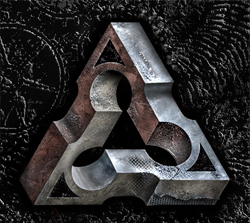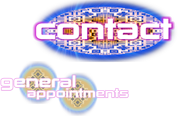Q: From Jennifer: Hello, I have severe acne scaring on my back, shoulders, & chest. The scars are older & smoothing out (15+ years). Can deep pitted skin be tattooed? If so how do I go about finding an artist? I would really like to cover it with something beautiful.
A: This is actually a subject that is sort of near and dear to me, since I am a heavily acne-scarred individual, your classic pineapple face. I really got it the worst on my neck and back, but there were deep infections in my chest and other places as well. It began around age 16 and went on well into my thirties. As a teenager, it—well, you don’t need me to tell you what it’s like. It scars you in other ways too.
Despite countless visits to the dermatologist, the only strategy that really worked was to just wait it out. This was part of the reason I was so attracted to getting heavily tattooed, since I also had spots of it on my arms. So those got tattooed pretty quickly. But my arms never got those deep pus-filled pockets, the ones that last for months and give you white-hot flashes of pain when you hit them the wrong way. Or stick to the sheets when you sleep. No, those went on and on. And on and on. There’s still a little volcanic activity, but last year I finally felt ready to get my back tattooed. And I faced just the challenge that you do now—coming up with a design that can work with heavy scarring like that. For me, that was kind of easy—I am a fan of texture effects in tattoos and have a lot of fun surface effects throughout my tattoo collection.
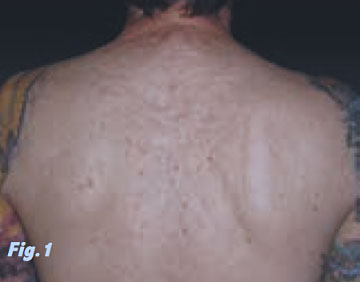
Not every tattooist is ready to work on skin like this. For starters, the most conventional styles of tattooing, with simple single-pass linework and smooth shading or coloring, simply won’t do much to conceal scar tissue, and can in fact bring the wrong kind of attention to the area. Single-pass linework will blow out and drop out and zigzag around uncontrollably, even when applied with the greatest of care. Smooth fields of color just won’t stay that way, healing with a patchy overall quality even after a touchup pass. So far we’ve gotten the best results from designs that use strong, sculpted lines on some elements and no linework on others. Sculpted lines are applied with more control and care than single pass linework and can be adjusted better to work with the skin’s uneven landscape. And textures are a great way to overcome the problem of color healing unevenly.
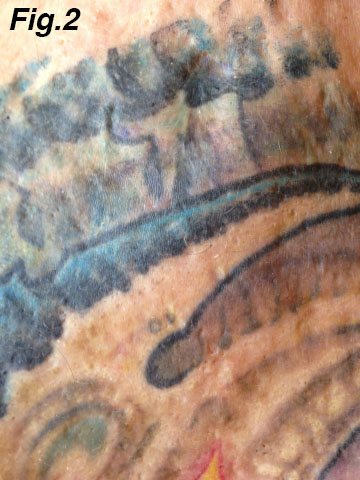
.jpg)
So no matter how nice of a tattoo you get there, you’ll still need to accept a certain amount of visible texturing from the scar tissue, especially in certain lighting conditions. But I’ll tell you, I am so much more ready to wear a tank top now than I was before getting this piece. I own my scar tissue now in a way that I didn’t before. I’ve reclaimed my back for myself. As far as finding an artist goes, start looking at portfolios, asking around. You’ll know when you’ve found the magic combination of a portfolio you love and an artist who is excited about taking on your scar cover-up project. Good luck!
Q: From Carlos: I’ve recently begun to book a little further ahead and I am having trouble trying to get things designed for many people. Most of the time clients will ask to see something a week or more ahead of their appointment, which I don’t think is unfair, but I have a full day session and a complete design that needs to be done for tomorrow’s client everyday, and it’s hard to show future appointments almost ANYTHING until the day of the appointment. The problem this creates is that once in a while I’ll get someone who wants changes large enough that I can’t make them on the spot. Are there steps that you take to ensure you and your client are completely on the same page to prevent this from happening?
A: Part of what makes this subject tricky is that every client’s needs are so different. Some will be thrilled with pretty much anything you do as long as you make it look nice, while others only seem happy if they’ve had some kind of guiding hand in every detail of the piece. Sometimes you can feel this out ahead of time, and prepare accordingly. I recently had a client approach me with a sort of warning that her request was really specific, while also being a little vague, which can sometimes be the worst combination. But I liked what she was aiming for in general and took it on, knowing that I would need to show several stages of the drawing in the months and weeks prior to the appointment.This was for a high-budget piece, plus it was something I was into doing, so I was willing to do the extra work. But most of us could only justify this kind of treatment for a few exceptional projects from time to time. The advantage of taking on challenging projects is that it keeps you out of a rut by forcing some tough artistic problem solving. It’s good for 10-20 percent of your schedule to consist of challenging projects. But try to identify these as they come in so you can make the time you need for advance preparation, including the possibility of several stages of showing drawings to the client.
One important means of getting on the same page as the client is to present them with some quick, small rough sketches showing the basic flow, layout, and placement of the various design elements. Get this stuff established before you put any real time into it. Plus, working small can make it easier to give a drawing a nice natural flow, as it uses the movements of the hand and wrist in a way that can really animate the drawing. It’s actually harder to get a natural flow at a larger size. Once the client has signed off on the small rough sketch, you can proceed with confidence on the finished drawing. If you like the flow of the small one, try this:
1. Scan it into Photoshop or Photoshop Elements (the cheap version)
2.Blow it up to the size of the client’s body part
3. Knock its contrast down so that it’s nice and light (Command/L, then move the lower left slider most of the way to the right)
4. Print it
5. Draw directly on top of it, making whatever refinements you need. Then it’s ready to stencil.
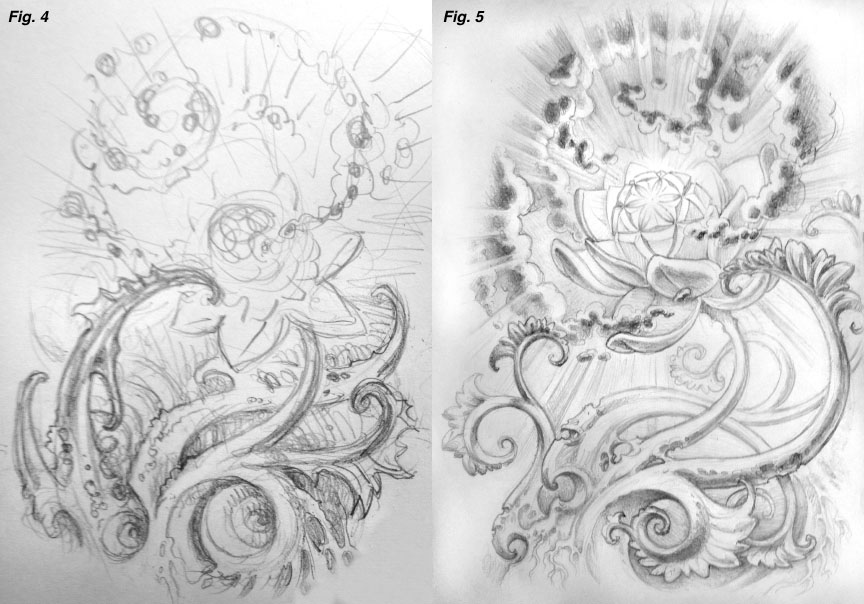
You can discourage any compulsive unnecessary design changes by explaining ahead of time that the first drawing comes as part of the price of the tattoo, but any major changes after that are done at your tattooing hourly rate. Then if you end up needing to spend several hours of on-the-spot doing changes before starting the session, you’re at least being compensated for your time. State this policy clearly on your deposit form, and it’s up to you how rigidly you want to enforce it.
You can’t always plan ahead for every contingency, and not all clients will reveal how challenging they might be until you are already running behind. In a worst-case scenario, if they want more changes than you have time for, reschedule them. If you’ll be able to deliver a better tattoo as a result, they should be grateful. But most importantly, simply don’t overbook yourself. You don’t need to be booked solid—a little breathing room in your schedule will come in handy time and time again. Trust me, you’ll use every bit of it. I’m going on 25 years in tattooing this year, and I’m still not burnt out. That’s because I slow down when I need to.